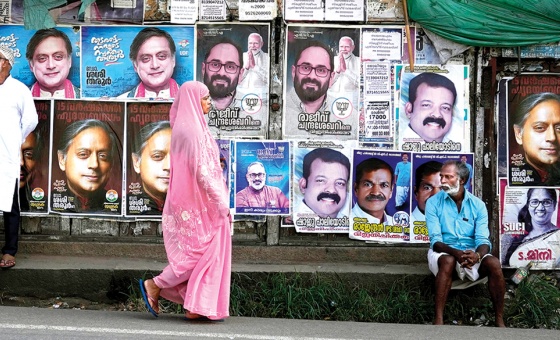This is the last article you can read this month
You can read more article this month
You can read more articles this month
Sorry your limit is up for this month
Reset on:
Please help support the Morning Star by subscribing here
WE ARE in the midst of a public health crisis in Britain — drug-related deaths have reached the highest number ever recorded. More people are dying in circumstances related to drugs than from road traffic collisions.
In the past four years annual heroin and morphine related deaths have soared by a staggering 109 per cent in England and Wales. This is happening because the government views drugs through the lens of criminality rather than public health.
The government has an ideological abstinence-focused agenda which is fuelled by an unrealistic desire to create a drug-free society.
This means that thousands of people are criminalised for simple drug possession, funding for essential treatment services is being slashed, and the introduction of life-saving harm reduction measures — like safer injection facilities — is being hindered.
While prohibition harms people who use drugs problematically across all strata of society, it is poor people who suffer the most.
The harms of problematic drug use are exacerbated by the lack of a financial safety net or strong support system.
People in poverty can’t afford private rehabilitation services, so funding cuts to public services can leave them unable to access potentially life-saving care.
People who don’t have an indoor space in which to use drugs — especially homeless people — may have no option but to use on the street; this then presents a host of new risks, particularly being criminalised by police.
Criminalising people for drug possession means that thousands are getting criminal records every year for low-level non-violent offences, which in turn hampers employment opportunities and furthers social marginalisation.
On top of this, racial disparity at all levels of the justice system — from police searches to sentencing — means that black people face harsher consequences for drug use than white people, despite using drugs at a lower rate.
As drug-related deaths spiral, and the harms of the drug laws continue to hit society’s most vulnerable, one would like to think that the Home Office has some kind of grand plan in all this. But the truth is even harder to stomach — they know they’re failing, but perpetuate the unsuccessful policies of prohibition anyway.
In a 2014 report, the Home Office noted the results of its “fact-finding” mission in 11 countries. According to the report, signed off by then home secretary Theresa May, researchers did not find “any obvious relationship between the toughness of a country’s enforcement against drug possession, and levels of drug use in that country.”
In an evaluation of the 2010 UK drug strategy, published in July of this year, the government admitted that the estimated £1.6 billion spent annually “on [drug law] enforcement and related activities” has “little impact on availability.”
This all begs the question: why does the government continue to spend vast sums of money to criminalise people for using drugs? Drug policy does not need to be this way; this is where the Museum of Drug Policy comes in to play.
The Museum of Drug Policy, which opens for three days in London from Friday November 3, will illustrate the harms caused by the war on drugs through an exhilarating artistic, educational, and emotional experience — with interactive installations, multimedia displays, panel discussions and film screenings.
It will also use these media to demonstrate the potential for drug law reform by advocating new approaches rooted in dignity, health and human rights. It will lay blueprints for a drug policy of the future — where compassion, rather than criminalisation, is the foundation.
A particularly powerful exhibit at the museum is “… and counting,” created by artist Ann Lewis, which features 187 toe-tags representing drug related deaths in Britain. The piece provides a visceral illustration of the most horrific consequence of failed drug policy: the death of a loved one.
Reducing the potential harms of drug use is therefore a key topic throughout the Museum’s events, particularly in what bodes to be one of its most popular discussions — Drugs in Clubs: High Time for Reform? — hosted by DJ B.Traits.
The discussion, like many others at the Museum, will involve panellists from a diversity of backgrounds including a deputy police chief constable and a representative from the Loop — Britain’s foremost forensic drug testing non-profit that provides safety information to revellers at music festivals. Panellists will consider the problems that drug prohibition causes in nightclubs.
And the Museum isn’t just focused on Britain. Despite some movements towards evidence-based approaches abroad, the vast majority of the world implements repressive drug policies rooted in criminalisation. In some countries, this has resulted in human rights abuses and suffering on an incalculable scale.
A series of poignant portraits by Tracy Hetzel will be exhibited at the venue — many depicting individuals who have been executed for drug offences, mostly in south-east Asia.
Several countries, including Indonesia and Singapore, continue to execute people for non-violent drug offences.
Another region devastated by drug war violence will also be well represented in the Museum’s exhibits. To honour the 43 Mexican students who were “disappeared” amid the country’s drug war in 2014, a beautiful mosaic vehicle — the Tiki Love Truck by Carrie Reichardt — will be set up.
Prohibition-related violence in Mexico has spiralled in the past decade; some researchers estimate that over 100,000 people have been killed.
A conversation on international human rights violations will be led by a host of passionate panellists at the Museum, in a discussion entitled Rights and Wrongs — Human Rights and the War on Drugs.
The museum will also include a panel on sex workers’ rights and a free performance by the incredibly entertaining and moving Sex Workers Opera, as Release, the museum’s hosts, also provide legal support to people who undertake sex work.
Though it will only be on display in London for three days, the Museum of Drug Policy is set to reinvigorate the conversation around drug policy reform in Britain and beyond.
Entry to the museum and all of its events are free, and it’s unlikely to return to Britain anytime soon — so this is an opportunity not to be missed.
The Museum of Drug Policy will take place at 47-49 Tanner Street, London, SE1 — a warehouse venue provided by Ugly Duck. For more information on the event visit: release.org.uk/museumofdrugpolicy.









